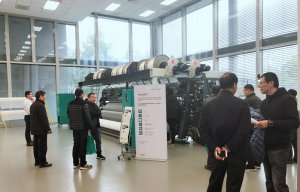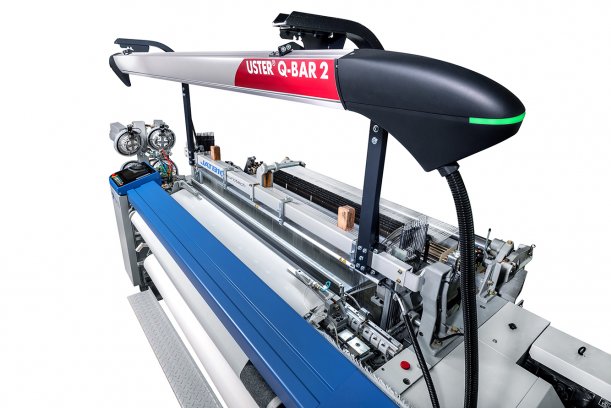
Karl Mayer launches TM Weft in China
Detection position in the fabric formation zone allows rapid intervention.

29th April 2021
Innovation in Textiles
|
Uster, Switzerland
Uster’s new Q-Bar 2 is a unique formation monitoring system for weaving machines. By monitoring fabric production at the critical early stage – directly at the interface of warp and weft threads – it allows for rapid response as soon as a defect appears, avoiding long-running or repeating faults.
Alarm and stop signals alert the operator to allow problems to be corrected immediately and to reduce second quality and material loss, as well as minimising the need for post-production checks. For weavers this has a positive impact on both productivity and quality.
Weaving defects can have various root causes, so Uster Q-Bar 2 provides different algorithms to identify specific defects and their causes.
Its enhanced detection position in the fabric formation zone means the warp is monitored even before it is traversed by the weft, in order to identify any incorrect warp positions, missing warps, loose warp ends and even pattern irregularities.
Also important is the control of weft irregularities. By monitoring each inserted weft in the formation area, Q-Bar 2 primes users to react to weft irregularities at the earliest possible stage. At this point, it can detect weft-related defects such as double picks, broken weft or slubs and loops.
Defects that become visible only in the woven fabric are the biggest threat. Often, it’s too late when defects such as reed marks, dirty yarns or floats are spotted, but it can’t happen with Uster Q-Bar 2. Its fabric inspection algorithms detect even ‘invisible’ defects in the fabric. It’s the simple solution to improving fabric yield by automated formation monitoring.
Q-Bar 2 also monitors critical machine units in the formation zone. If there is a problem here, the system makes it easy to identify and eliminate it, preventing further defects and again maximising fabric yield.
Specific algorithms also detect irregularities in the selvedge, as well as broken leno – but also identify any pattern defects. Continuous pattern monitoring flags up incorrect patterns at the earliest stage, so the loom can be stopped, and the problem fixed before many metres of fabric are wasted.
Lastly, the system also keeps a permanent eye on the fabric width, providing continuous width measurement of the woven fabric, from loom setup to full roll.
“Independent of the fabric application, Uster Q-Bar 2 is a game-changer,” says Michelle Salg, product manager of fabric inspection at the Swiss company. “For the first time, weavers can actually prevent weaving defects instead of only reacting to them.”

Business intelligence for the fibre, textiles and apparel industries: technologies, innovations, markets, investments, trade policy, sourcing, strategy...
Find out more